It’s mid-September, and the vast majority of endemic native plant species are done flowering for the season. However, in the last couple of weeks, one hold-out, Coyote Brush (Baccharis pilularis), also known as Chaparral Broom, has only just begun to bloom.
Like many late-season native blooming plants in this region, Coyote Brush is a member of the sunflower family (Asteraceae), despite bearing little resemblance to a sunflower whatsoever.
Coyote Brush is a very common species found in coastal sage scrub and chapparral communities throughout north and central California. It is not a plant that will cause your neighbor’s jaws to drop, and is not really suited to a well-manicured landscape, although it can be used as an informal hedge or screen.
Coyote Brush is variable in height, ranging from 3 to 8 feet tall. It’s deep rooted, and drought tolerant, making it well suited to planting on slopes to curb erosion.
The leaves are simple and alternate along the stem, but reduced to bracts at the tips.
The bloom period for this species typically ranges from late August to November.
This species is dioecious, producing tiny male and female flowers on separate plants, although neither flower type is particularly showy. What the flowers lack in size though, they make up for in numbers.
It’s a rather unassuming plant from a distance, and quite easy to ignore, especially when it’s not in bloom. As such there are two types of gardeners when it comes to Coyote Brush. Those who feel it has a deserved place in the habitat garden, and those who cringe at the mere thought of it in the landscape. However, it does have tremendous ecological value.
Up close at this time of year though it becomes apparent that this species is perhaps one of the most singularly important native plants in bloom, at least from a pollinator’s perspective. Even before you can see them you can hear the myriads of flying insects buzzing between the blooms.
In the early autumn native plants in this region that provide nectar are quite scarce. As a result, at least here, Coyote Brush is a highly prized nectar source for many species of native, and non-native, pollinators alike.
Coyote Brush grows in open areas, in full sun. We only have a few mature specimens growing here at the moment, mostly around the periphery of the orchard, in part because some plants were removed when the kitchen garden area was graded. These few plants that remain down-slope from the apiary are absolutely swarming with activity though as the bees restock their winter larder stores before the weather changes.
I now regret removing, rather than moving, some of the plants that were cleared during the installation of the kitchen garden. At that time, in my ignorance, I just viewed these plants as common, and rather weedy looking. I honestly didn’t recognize much value in them at all.
However, I’ve now come to appreciate that this species has a very important place here on the farm.
They’re tough, surviving on no supplemental water once established, growing in very poor loose and sandy soils, and virtually deer-proof.
This plant clearly appeals to wide range of insect species…
…and it provides valuable food and shelter for bird, and reptile species too, like this juvenile Coast Range Fence Lizard (note this baby is perched on an oak leaf, which shows how small he is).
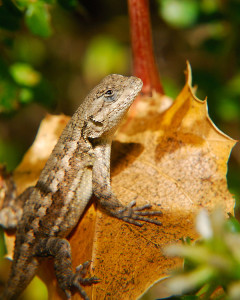
All these insects provide an irresistible buffet for this juvenile Coast Range Lizard, who is perched on a fallen leaf in the middle of a Coyote Brush shrub
As the female plants can be somewhat messy as they finish blooming, male plants are the ones that are predominantly available in the nursery trade. Both sexes are required for seed production. Seed production here, however, does not seem to be a problem!
If I can propagate more of these plants myself, either from seed, or through cuttings, they will be useful to fill in some areas down-slope of the orchard, and across from the goat barn.
November should be the best time to try propagation from woody cuttings, but should that fail, the best time to collect seed is between now, and December. I can harvest seeds as they mature in the fall, and hold them until spring. The seed doesn’t need any pre-treatment, and can simply be sown in flats.
That, though, is a project for a rainy day in the greenhouse. First I need to clear some bench space as the greenhouse is a little crowded at the moment with native sages, and buckwheats. Thankfully, fall planting season is almost here!

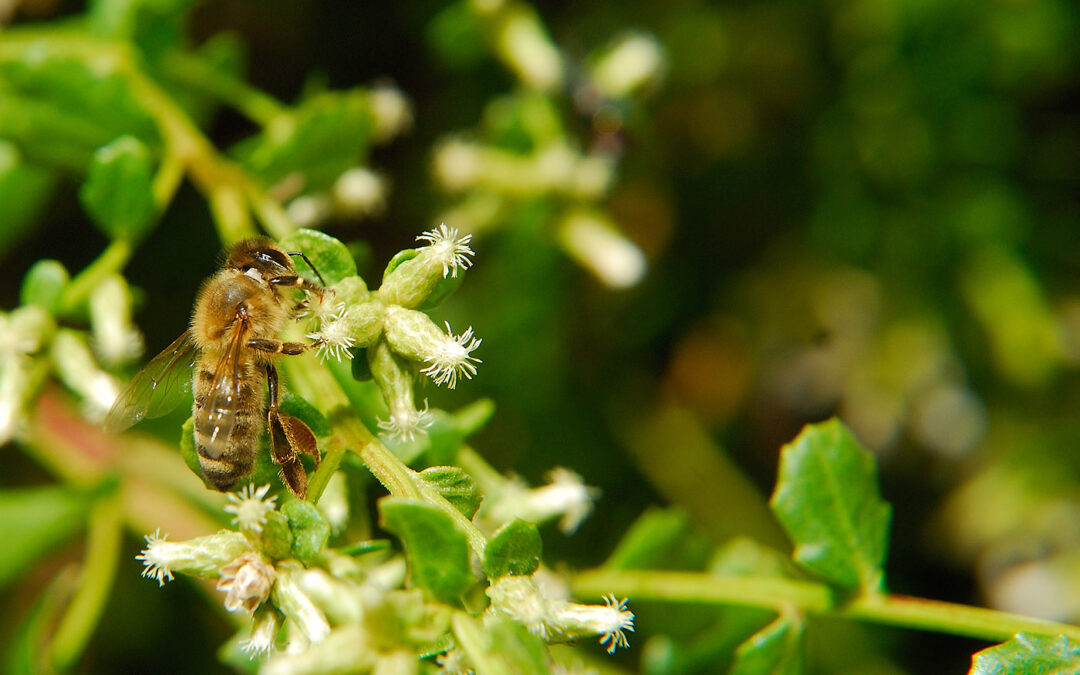
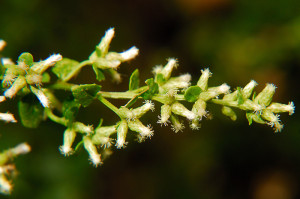
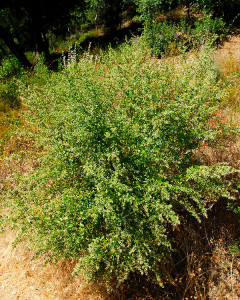
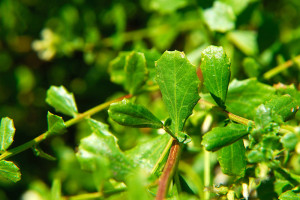

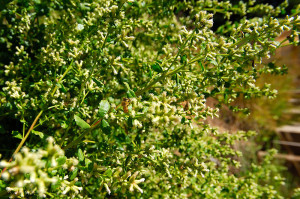
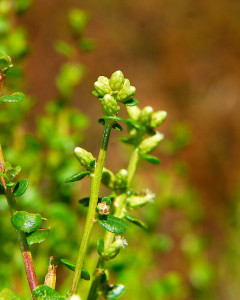

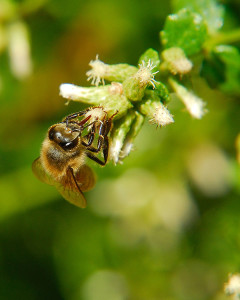
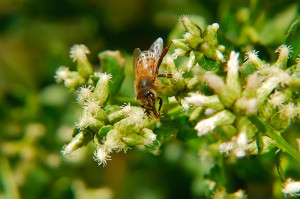
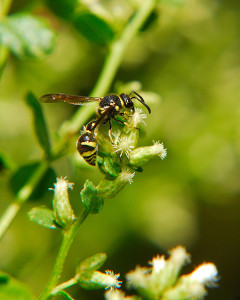
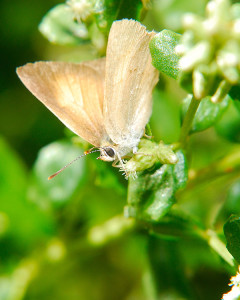
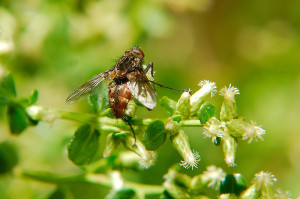
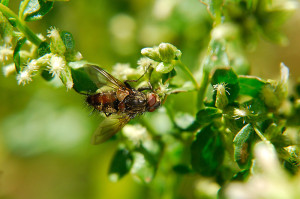
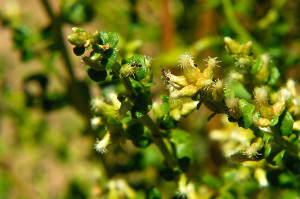
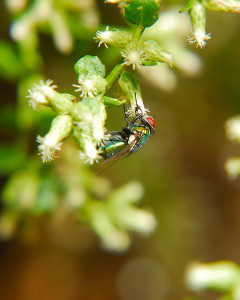

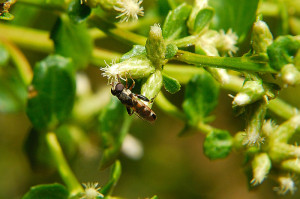

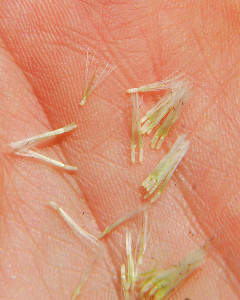







Hi Clare!
I took some cuttings from male plants last November. They rooted very quickly in the kitchen window- just in a few weeks. My first success with native plant cuttings! The seed from the female plants didn’t germinate at all. I’m looking forward to planting them as soon as the weather cools off a bit. The reason I noticed them in the first place was the swarms of insects they were attracting. Thanks for this very timely blog post and good luck to you!
Thanks Katie! It’s good to know your cuttings rooted quickly. I’d read they were quite easy to propagate from cuttings, but so far I haven’t tried it myself. I know that the seeds must be fully mature for them to germinate. I might try propagating some seeds, even if the cuttings take, just to see if they’ll sprout. As the deer don’t eat these plants once they’re established, I know I can find a place to plant any extras 😉
Clare,
Interesting read about these plants. We have a Baccharis here, it is known for Monarchs visiting it on the east coast.
In my mind this plant has certainly become a lot more interesting now that I appreciate its value here! Does your Baccharis species have tiny flowers too?
Clare,
You can see our Baccharis halimifolia at
http://rlephoto.blogspot.com/search?q=baccharis
Ah, the flowers do look similar, albeit more colorful than ours. I don’t tend to see the larger butterfly species on our native Baccharis, mostly just small blues and skippers.
I’ve got the low-growing ones that I hope will make a fairly decent groundcover.
I’ve considered planting some of the ground cover varieties. I know that the cultivars ‘Pigeon Point’ and ‘Twin Peaks’ both grow quite low to the ground. I expect they’d make for very easy care ground covers once they’re established.
What an unassuming plant yet a valuable partner in the garden. I like those kind of plants! 🙂 We don’t have that growing here. I wonder what is similar.
You may not have plants in the Baccharis genus in your area, however, I expect you have a number of wildland plants that gardeners may overlook that are similarly appealing to an array of insects!
It sounds like an all round useful plant for insects. It reminds me of Caryopteris. A plant that attracts hoards of differing insects, self seeds and has small flowers. The Caryopteris is unassuming until it blooms too. They are also a bit rangy, but I love them for all the insects they feed. For some reason, they are hard to find in nurseries anymore. I have to ask why.
I was really struck by the diversity of insects on these blooms. I don’t usually see Tachinid flies nectaring in the gardens, and for whatever reason flies especially seem to be attracted to the flowers. I didn’t realize we had so many different species of them!
I’ve never heard of this bush, but I think a hedge of them would really be very pretty. So many pollinators on it! It’s funny that some of the plants we think of as not quite beautiful are really some of the most useful. I think (and I hope) more gardeners look into function as well as beauty when they design a garden.
I think any California habitat gardener could plant this. Providing it is occasionally trimmed to tidy it up, and it’s planted as a background shrub, it could probably blend in quite well. It would only draw a lot of attention to itself in the fall when all the insects come buzzing around the flowers 😉
This would be a great addition to the gardens by the river. I’m always looking for good natives to add to attract and feed pollinators. I’ll have to check to see if it will thrive in my zone (7b). BTW–I’m so excited to find your blog! I have a small heirloom plant nursery, several kitchen gardens, and chickens–in our suburban backyard. I’m envious of your farm!
Welcome Julie! It’s always good to plant to locally occurring native plants near creeks, rivers, or streams, as their seeds can be carried downstream, and populate areas far from the garden. I think this species generally grows between USDA zones 7a-10b. It’s greatest requirement is an open area, in sun. Baccharis really resents any shade.
Thanks for foregrounding this great plant. I love coyote brush – and equally I chop it back or dig it out – it grows so profusely where I live. I have photos for a short post on telling male flowers from female – just as a point of interest… Will do that one in the upcoming week.
The differences between male and female flowers are very obvious. Unfortunately, I seemed to have all female plants in this part of the orchard. I suspect the males are further upslope, but the soils are very loose, and now covered in fallen leaves, and acorns, so in the interest of not falling down the hill, I gave up searching for the male blooms here. Would love to see your post comparing the two!
How fortunate your pollinators are that you’re taking care of them. I’m sure if it’s a native, it will propagate easily. We are so fortunate in our neighborhood — there are many native gardens as well as nectar-making trees. The bees are happy year ’round. If we were farther out, we’d have to be more careful for them, as you are.
I recently discovered that the Tachinid flies are predators of the Pear Sawfly. After the damage done to our fruit trees by sawfly the last 2 seasons, I’m more than happy to encourage these predators!
Coyote Bush seems like the perfect plant for your area this time of year. Considering how the plant benefits the myriad of wildlife makes up for it’s rather humdrum appearance.
Coyote Brush’s status has definitely been elevated here. That’s the advantage of looking to native plants first, at least here. They’re better adapted to our sandy soils, and low rainfall, than many cultivated ornamental species. Even though it’s drab from a distance, it’s definitely a lot more interesting through a macro lens! 🙂
Clare another unique native…I love the unusual foliage and the little flower that is so appreciated by the pollinators.
It’s not the prettiest, but it’s definitely popular in the garden at the moment!
Not ready for this in my garden, but the name is very cool! Nice post on this unique plant.
This plant is definitely not suited to all gardens, although even in a more formal environment, it could be positioned more toward the back of a border. It’s also good for a troublesome spot where not much else will grow too!
Isn’t it funny how plants we once overlooked become important once we realize their use? I never used to think much of native plants but after reading about how many insects one single native tree can support I’m constantly looking out for native plants on my property now. You must be thrilled to find such an easy growing plant that supports the bees so well at this time of year.
Anything (almost anything) that volunteers here, willingly, without the need to be pampered, is welcome. I really love that this plant tolerates our poor soils on the slope, and helps to stabilize the soils too, especially in areas where irrigating would be challenging!
Coyote bush also grows well in clay soils, and poor soils don’t seem to hurt them too much, though our low growing coyote bush doesn’t seem to thrive quite as much in poor soil as the large version of the bush. I’ve had great success with both cuttings and with seeding flats. We had an entire four foot branch crack and fall off our biggest bush a few years ago, which I then cut into pieces and directly pushed into the ground (making sure 2/3 of the branch was underground) in the middle of winter. Better than half of them survived. We’ve also found quite a few volunteers on the property as a result of their seed production- hopefully, we’re seeding some of the neglected land around us as well!
Glad your cuttings and seeds worked. I’m curious to try both, although it sounds like cuttings might be all I need. We haven’t found a lot of volunteers (yet), but our sandy soils might dry out too fast for them get established. As your branches rooted so well, it sounds like layering might work really well too!
Interesting, I had no idea that Coyote Bush is in the sunflower family. Nor did I realize that it is so attractive to beneficial insects. There’s a few plants that have volunteered around by property, I think I’ll have to encourage more of them, especially around the vegetable garden. Thanks for a very informative post.
That surprised me too. The Asters I could believe, but Coyote Brush…a sunflower? Still seems a bit odd to me. I’ll be curious as taxonomists reclassify some of these plants to see if Coyote Brush doesn’t get reclassified. This is a perfect plant, at least here, for those scruffy edges, where you don’t know what to plant. It’s evergreen, so most of the year there’s something, but then in fall, it’s suddenly popular!